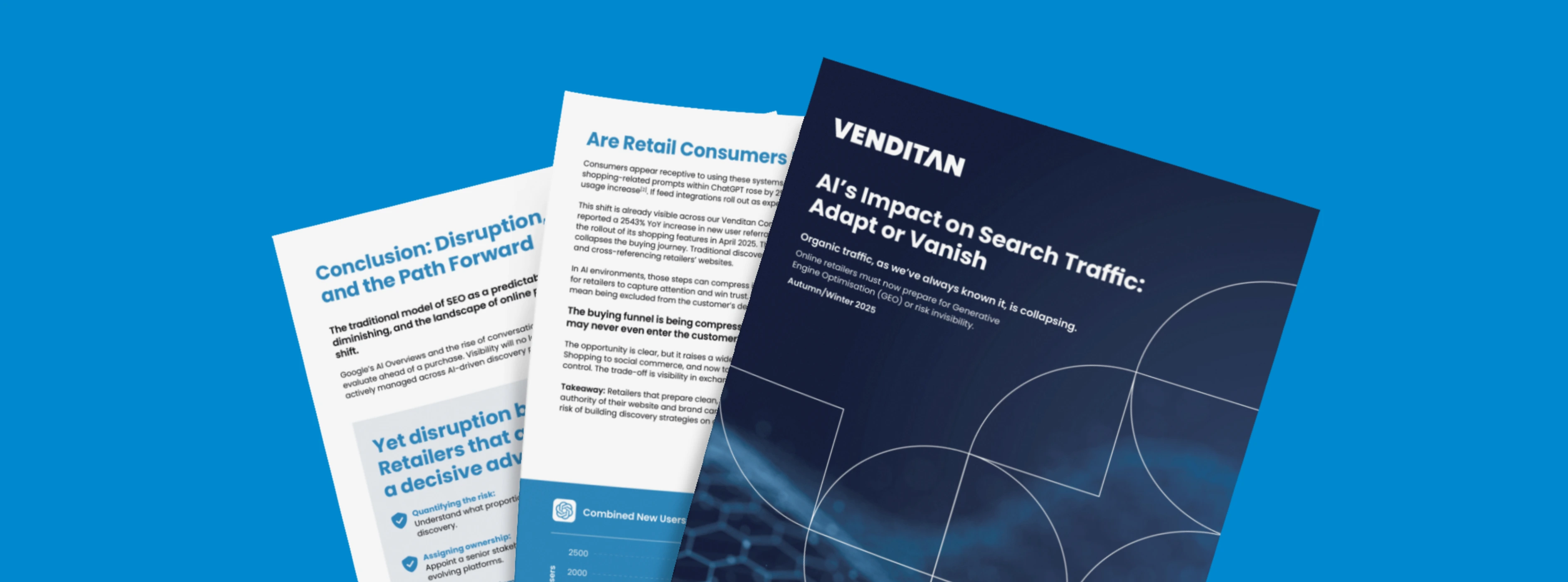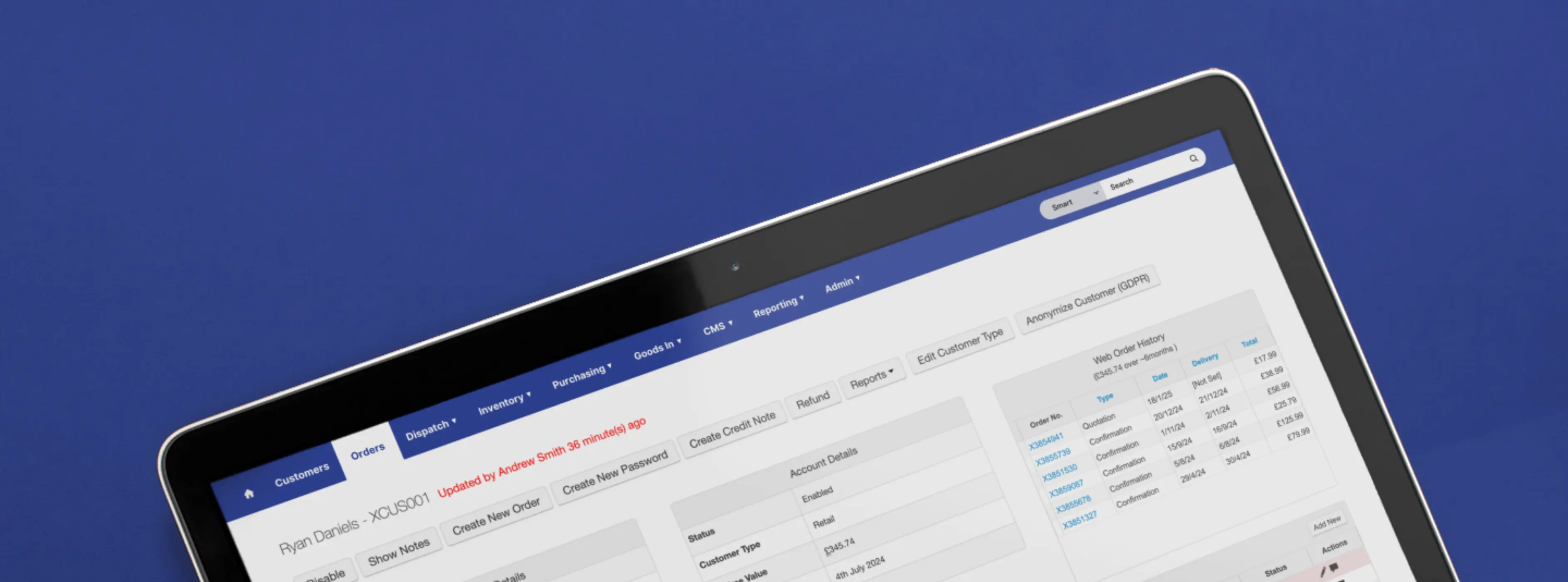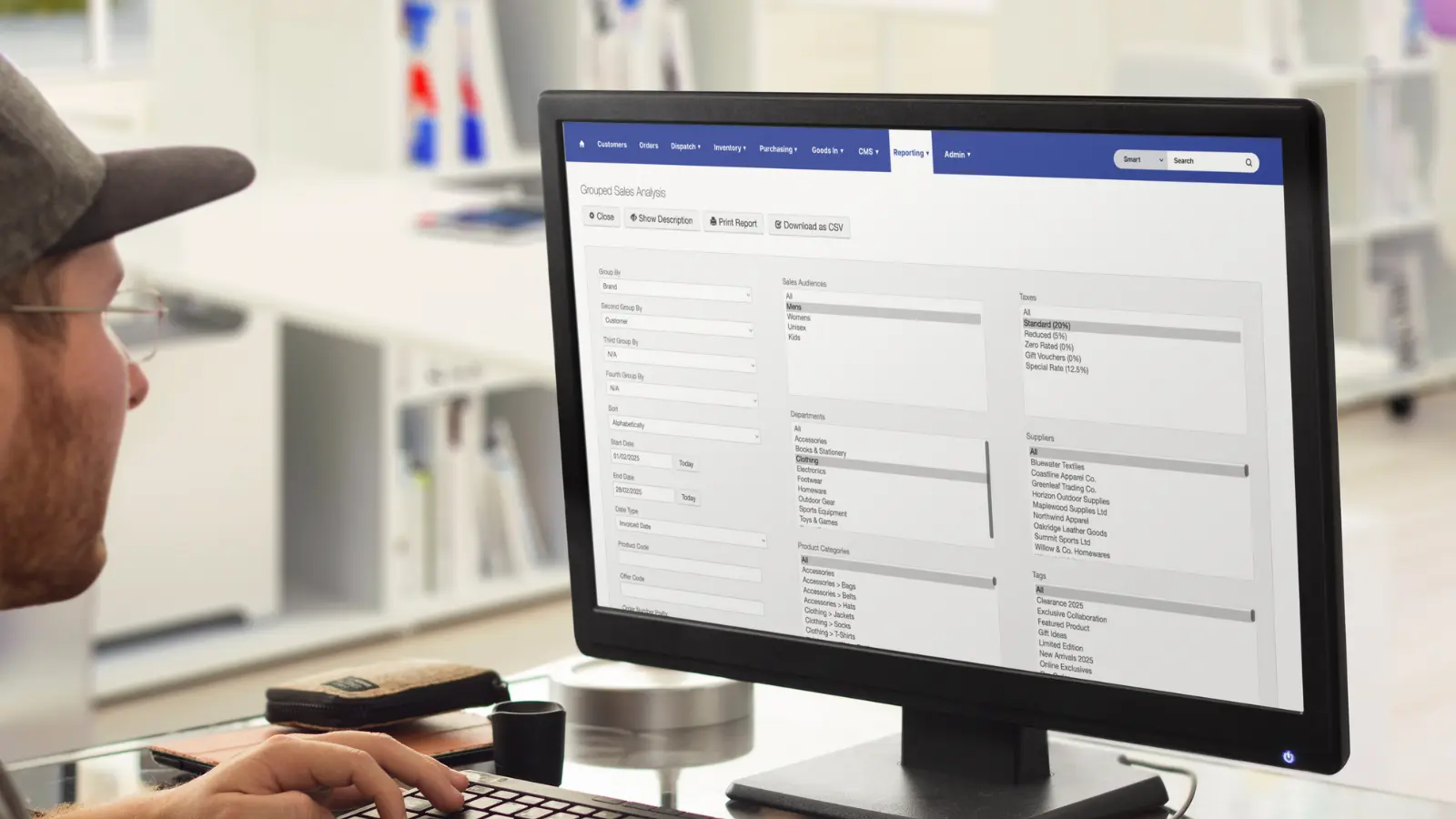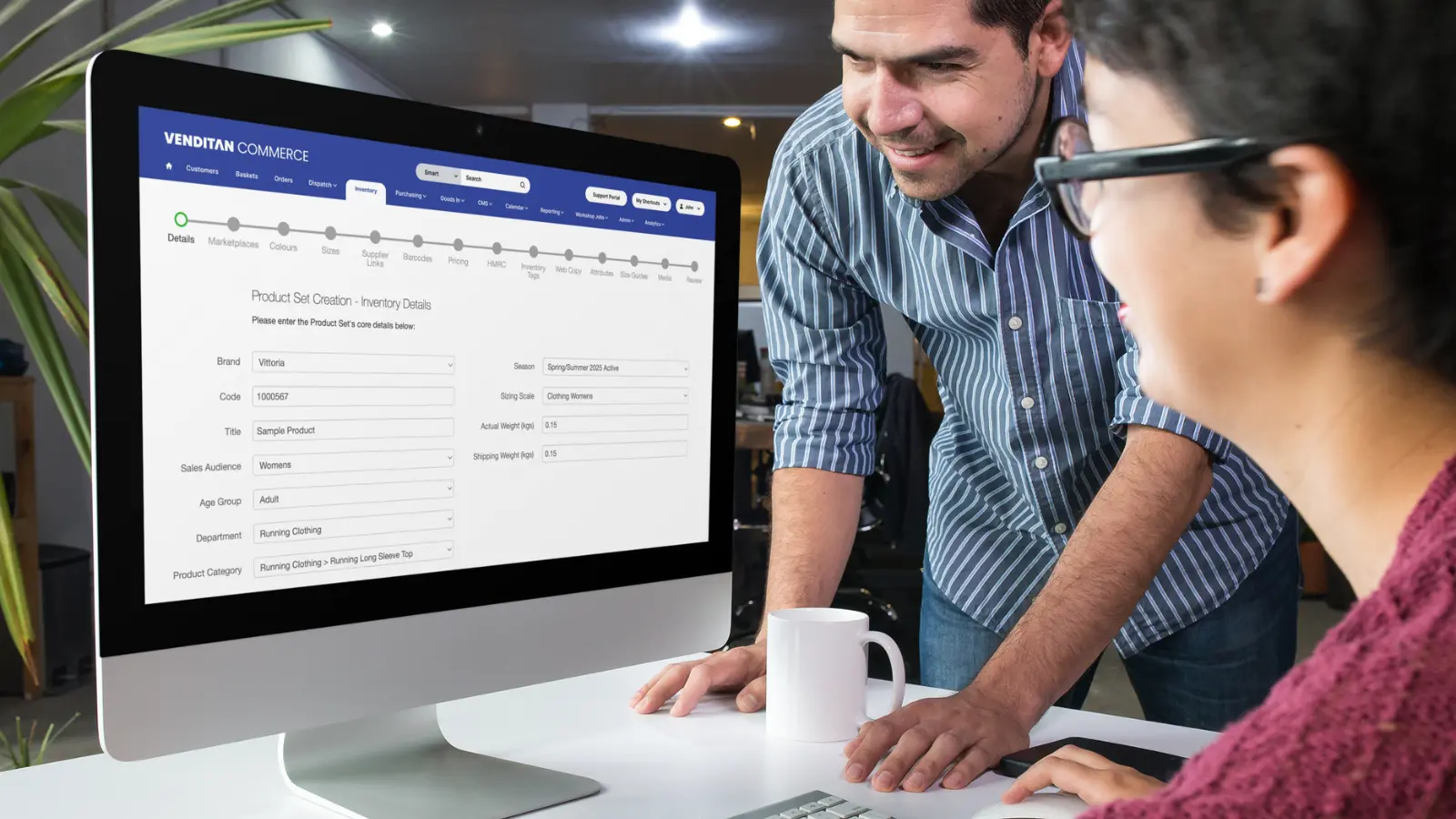Exciting Times!
“Cross-border shopping will make up 20% of global eCommerce in 2022, with sales of US $630 billion.”
– Online Cross-Border Forecast 2017-2022, Forrester
International eCommerce is booming. With cross-border shopping growing rapidly across the globe, demand in our nearest markets shows no signs of slowing down. European B2C market growth is running at an impressive 14% every year, while Southern Europe just hit a phenomenal 25%, according to eCommerce Europe. This is a cracking growth opportunity for any e-tailer. So why aren’t more businesses cashing in on rampant overseas demand?
As Dan Baker from Smart Insights puts it: “A big chunk of online traders sit here: If someone from another country reaches the checkout stage, they can probably enter their address successfully, and perhaps tax has been calculated properly, but in the main it is an accident if they make international sales, rather than the result of careful planning and execution.” To their credit, it’s not hard to see why smaller businesses rely on accidents like this: effective internationalisation can seem seriously intimidating when you lack experience.
Quick links:
.01 Rethink Your Pricing Strategy For The New Market
.02 Work With Your Existing Partners To Optimise Your International Shipping Options
.03 Make Sure You Accept Your New Market’s Favourite Payment Methods
.04 Test The Water With Paid Search
.05 Consider Translating Your Content
.06 Make Sure You Can Provide Customers With Support In Their Own Language
.07 Improve Efficiency Of International Operation With Local Warehousing & Distribution
International complications
Even a casual glance overseas exposes a laundry list of issues. First there’s the operational challenges and paperwork in negotiating European legislation and the ongoing Brexit saga, plus tax and custom rates, all in different currencies. Then there’s working with foreign delivery providers, pricing your products, localising your paid and organic search marketing, and creating custom content for new territories. Even once you’re set up, there’s adapting your business to a whole new culture.
“Even European markets are hardly comparable with one another. A good example is design. In Sweden, functionalitysimplicity and speed are the most important features of an online shop. This is in contrast with France, where the focus is on design.”
– eConsultancy
Torn between huge potential growth on one hand and a host of complicated issues on the other, it’s no surprise that many retailers default to a mixed solution that doesn’t deliver. But the happy truth is that internationalisation isn’t as complex as it seems. You don’t need colossal up-front investment and you don’t need decades of experience (although they certainly won’t hurt either). The secret is to break things down and take it one step at a time. Most of all: keep learning.
Start with demand
Step one of the international game plan is keeping a cool head. Stay calm facing the size and complexity of overseas expansions, and be clinical on the differences between a trickle of international orders and a flood of foreign customers. Start with a hard look at the real level of international demand.
“There are two big things you need for successful internationalisation. Yes, you’ll need budget – but more importantly, you’ll need patience.”
– Chris Maule, Managing Director, Venditan
First up, pinpoint exactly where the traffic is coming from. Your resources will go a lot further and your operations will be a lot more effective when you tailor your expansion for one country—so think ‘Italy’ before you think ‘Europe’.
Next, work out where the sales are coming from. It sounds simple, sure, but stay clear on the difference between traffic and genuine sales. (There may also be easier fixes if you do spot underwhelming conversion rates in a specific country.)
With traffic and sales tracked, get a gauge on your foreign social media following. Customers are great; engaged customers are even better. A social media buzz is a top indication that your brand is making enough noise to hold its own in a foreign market.
Finally, ask what the competition for your products is like in the countries you’re targeting. Internationally there’s a different competitive landscape. Taking on the locals in Spain is an option, but why bother if it’s safer to do so in France?
Seven small steps, one giant leap
You’re all set for international expansion once you’ve identified a solid base of demand. Moving forward into foreign markets is now a step by step process, learning as you go.
We’re sharing our diagnostic 7-step checklist: get these things right first!
Each eCommerce business will move through these steps at their own speed, but in our experience this is the right sequence to maximise the returns and mitigate the risks on your international investment.
So, with that in mind.
1. Rethink your pricing strategy for the new market
First up, rework your prices for the new market by taking a hard look at the numbers. This is where your earlier research and analysis of demand really come into their own; no matter how sophisticated your domestic pricing plan, you’ll need to know the competition inside out.
The truth is that markup pricing, vendor pricing, psychological pricing and keystone pricing are all effective strategies. But what chance do you really have to deliver sales if you’re 10% more expensive than a local market competitor on Google Shopping?
2. Work with your existing partners to optimise your international shipping options
The best place to start international shipping is still your existing UK base. Invest time with your existing partners first, getting to grips with their international service categories, and making sure your shipping matrix can handle the right size and weight items through the right partners. Get up to speed with your existing operations and you’ll be best placed to balance delivery costs against the best possible end-user experience. And once all that detail is mapped out, make sure you model it accurately in your eCommerce platform.
Work hard to keep the subtleties of your service category selection with accurate size and weight data—and don’t forget to blacklist countries you won’t ship to! Getting this right will delight your customers with goods that arrive fast and at a fair price, while maximising your own profits.
Maturing your operations means considering the specific idiosyncrasies of each market. For example, do you need to offer free returns to meet the market standards in Germany and Scandinavia?
3. Make sure you accept your new market’s favourite payment methods
Localised payment options are the bold next step for your international expansion.
It all depends on the market you’re moving into. If you’re selling in Spain you can safely rely on standard credit and debit cards for 91% of your consumers (eCommerce Europe). Then again, any effective German expansion means investing in payment systems like GiroPay and ELV.
The full selection of local payment options can feel overwhelming.
The complete picture includes over 250 options from credit and debit cards, to digital wallets and direct debit schemes, all designed to optimise conversions for their global niche.
But you just need to narrow it down for the territory you’re trading in. For instance, global traders will cover the biggest tactics by looking to Visa, Mastercard, AMEX and PayPal. Meanwhile trading in Europe means checking out with options like iDeal, GiroPay and SoFort, whereas AliPay and UnionPay are the correct choice for China.
It all comes back to knowing your market.
“In Spain… 91% prefer paying with Visa or Mastercard. But in Germany, the most preferred online payment method (38%) is ELV (short for Elektronisches Lastschriftverfahren), an electronic direct debit payment method that’s supported by banks in Germany.”
- eCommerce News Europe

4. Test the water with paid search
Getting concrete returns from your search marketing strategy is a tough enough task at home in the UK— taking it on abroad requires the same in-depth approach.
Paid Search is the best place to start as the ideal way to test and refine the findings of your pricing research. SEO is another essential part of the mix, though the longer lead time dictates an ongoing strategy.
Social media activity needs to be planned out too. Consider the resources you’ll need to set up a specialist account for the market you’re expanding into, then build a local following, find evangelists and drive tailored content.
5. Consider translating your content
It can be tempting to skip out on translation for certain markets. Take the Netherlands: when over 90% of the population speak English (European Commission), why make the investment?
The answer comes back to knowing the local competition. 9 out of 10 Europeans say they always prefer to shop on sites in their own language when given the choice (European Commission), so translated content is a must if local language competitors are serving up products that directly compete with yours.
But tread carefully. The comparatively tiny cost of automated translation makes it a tempting option, but nothing erodes trust and reduces conversion rates like translation errors. In our experience, every business should at least consider having a native speaking professional review (if not write!) the content.
6. Make sure you can provide customers with support in their own language
While native language telephone support is always a hefty investment, translated email support really is a minimum as soon as international revenues start to look sensible.
Make sure you shout about it on your website too – we’ve seen it make a major impact on conversions. Just remember that international shoppers expect and deserve the same level of support as home grown customers.
7. Improve the efficiency of your international operation with local warehousing & Distribution
You know you’ve made international status when you cut the ribbon on the warehouse doors. With local distribution you’re set to drive home your proposition with next or same day delivery for your international customers.
Local distribution will always be a major investment. But you’ll know the time’s right when you make it through all six steps and get to enjoy the benefits of a large, hungry customer base and a steady stream of international revenue.
Final thoughts
Knowing what’s working is simple: is the till ringing? Revenue is the best guide to whether a new foreign market has the fuel your business needs to grow. The rest is just like success in your domestic operations. Stay smart on creeping costs and margin, pick your partners well, and be sure to keep testing and measuring your tactics.
Have a project you'd like to discuss with us? Get in touch today.
Our recent posts
Keep up to date with the latest news and insight from the team at Venditan





.webp)



.avif)



